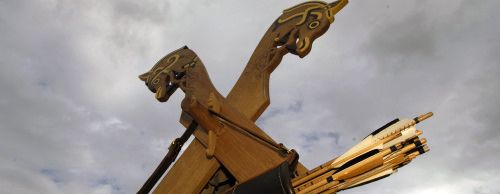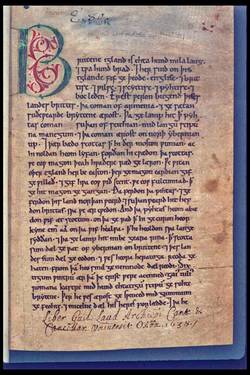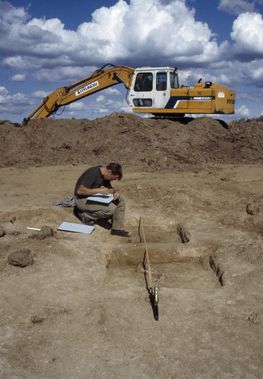
How do you gain knowledge of the past?
We have gained our knowledge of the Vikings and the time they lived in from various sources.
Sources mean - in a history perspective - texts and other relics of the past that historians and archaeologists use to make analyzes and interpretations of history.
We know something because we can read about other cultures' encounters with the Vikings in old books and annals.
Other things we know because we have paintings or other visual arts that show us what life was like at that time.
Different paths to knowledge
When writing a history book, making an exhibition for a museum or teaching about the Viking age, you can use different sources.
A source can be something written for example a book or a law.
A source can also be a picture, a rune stone, an old clay vessel or bones from a human.
There are written sources, iconographic (pictorial) sources and archaeological sources.
History
History tells about the people of the past, but it starts its story in what we call historical time. What is regarded as historical time can vary from country to country, but is characterised by access to written sources.
An unavoidable necessity in history as a science is source criticism – testing the veracity of the sources.
The historian must be sceptical about the source material for a particular historical period, a particular event, or various understandings of the same experience, and must test the reliability of the source.
But a historian’s work does not just consist of a critical study of the sources. The historian must also be able to communicate a coherent story about past events and situations. It is the historian’s task to break down myths and carry out source criticism, but the communication of history should not be just negative, destructive and revealing. A historian should also reach a broad public and create a picture of the past that is understandable for non-specialists.
History has a broad embrace. Everything is history! Everything about past society can be studied as history and the subjects of many other sciences are often studied by history: politics, geography, biology, architecture, art, philosophy, etc. So the historian makes use of both other scientific theories and other sources than written ones. Picture and archaeological sources are used as a basis for comparison for the written source, which is one way of testing the source.
Under this menu point, you can read about the working methods of archaeology, the various sources for the Viking Age, and the source criticism so necessary for Viking Age research.
Af: Mikkel H. Thomsen og Louise Kæmpe Henriksen
Archaeology
Archaeology is about the people of the past and the remains they have left us. Artefacts tell stories and each and every find is a new piece in the jigsaw showing how people lived in the past.
As a science, archaeology describes the cultural history of the past through artefacts and other material remains and provides insight into the interaction between the past, the present and the future.
To do this, it is crucial – just as at the scene of a crime – that the artefacts are not disturbed or removed before all information has been collected. For example, it is very important to know what layer in the earth an artefact comes from, because this can help date other objects in the layer.
An archaeological dig often starts with a request from a developer in advance of construction work. Information about the site is gathered and, ideally, a site survey is carried out. A smaller trial excavation is often carried out. Only after this is the find excavated, if necessary, for example by rerouting cables, etc. around it.
Archaeological finds are not dead objects. When the archaeologist uses his knowledge about the various historical periods and compares the find with other objects that have been found, the find starts to tell its story.

